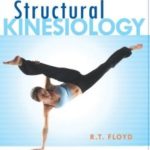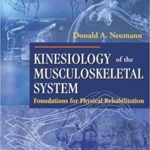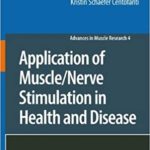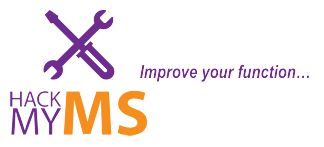Tips and Tricks for Improving Multiple Sclerosis

Resources & FAQs
Frequently Asked Questions (FAQs)
What is multiple sclerosis (MS)?
Multiple sclerosis is a disease of the central nervous system in which the body’s immune system attacks the myelin insulation that coats the nerve cells. Myelin helps speed nerve signals and also prevents interference between adjacent nerves. When the myelin is disrupted, the nerves no longer communicate effectively with the rest of the body. MS can affect the optic nerve and nerves in the brain and spinal cord. The locations of areas of myelin damage, known as lesions, control the nature of the symptoms the patient experiences. As a result, the disease affects everyone differently. Common symptoms include mobility issues, bowel and bladder problems, numbness and other sensory disturbances, fatigue, etc.
What are the four types of multiple sclerosis (MS)?
Relapsing Remitting Multiple Sclerosis (RRMS)
RRMS is characterized by the sudden onset of new symptoms or significant worsening of existing symptoms (exacerbations or flares), followed by periods of remission. Patients may not recover all function during a remission, which is why there is a movement afoot to reclassify RRMS as simply relapsing MS (RMS). The good news is that the FDA has approved a wide variety of medications to treat RRMS. Many patients go decades with minimum disability or effect on quality of life. Approximately 85% of MS patients have this type.
Secondary progressive multiple sclerosis (SPMS)
A portion of RRMS patients will transition to a progressive form known as secondary progressive MS (SPMS). In SPMS, the disease course is no longer characterized by relapses and remissions. Instead, it follows a steady progression. There is currently no way to predict who will make the transition or when, although the variety of effective drugs to treat our RMS has reduced the number of patients transitioning to as PMS and extended the average time to transition. Indeed, a recent study showed that decades can pass before a patient transitions from RRMS to SPMS.
Primary-Progressive Multiple Sclerosis (PPMS)
PPMS is marked by a steady progression of the disease from the time the symptoms first appear. Progression can be fast or slow. In some cases, patients go through phases of acute exacerbation. To date, only one disease modifying treatment, Ocrevus (ocrelizumab), has been approved for PPMS. Approximately 15% of MS patients have this form of the disease.
Clinically isolated syndrome (CIS)
In CIS, the patient has a single episode of symptoms lasting at least 24 hours but does not present sufficient evidence to be officially diagnosed with MS. CIS can involve a single symptom or multiple symptoms. If the episode is not accompanied by lesions characteristic of MS, there is a roughly 20% chance that CIS will eventually progress to full-blown MS. If the attack is accompanied by MS lesions, the chance of progressing to full-blown MS rises to about 60%.
What is neuromuscular electrostimulation (NMES)?
Neuromuscular electrostimulation (NMES) is a neurological rehab treatment that can help patients regain function by rewiring their nervous systems. NMES uses electrical current to stimulate muscle movement. When the patient attempts the movement at the same time the current flows to give them full range of motion, it helps retrain the nervous system. NMES has been used successfully to treat stroke patients and people with MS. Read more about how NMES works…
What is neuroplasticity?
Neuroplasticity refers to the ability of the central nervous system (CNS) to form new connections for nerve signaling. Neuroplasticity enables the CNS to form new pathways in response to activities, allowing the CNS to route around areas of damage. Read more about how neuroplasticity can help restore function in MS patients.
What is functional electrostimulation?
Functional electrostimulation (FES) uses electrical current to activate the muscles required for certain functional activities, such as helping your toe clear the ground as you take a stride. FES is an assistive technology, not a rehab technology. It can help reduce the effect of foot drop while you’re walking but it can’t actually help improve your ability to get your toes off the ground.
NMES versus FES
FES uses electrostimulation to help you perform a single task, such as raising your toes when you take a stride. NMES uses electrostimulation to help retrain your brain to better command your muscles to flex your ankle, so that you can walk better later that day, the next day, and the next. You’ve heard the proverb, buy an awesome person with them as a fish and they eat for a day, teach an awesome person with MS to fish and they eat for life? Well, FES will buy you a fish. NMES will teach you to fish (and improve your foot drop so you can walk down the dock, your balance, so you don’t fall over when you step in the boat, your grip strength so that you don’t drop the fishing pole, and your arm extension so that you can cast a hook. Or you could just skip the fishing and have cocktails at the boathouse, instead.)
How does NMES help multiple sclerosis (MS)?
Mobility impairment in multiple sclerosis (MS) is caused by demyelination of the nerves. If the myelin is disturbed on the motor nerves that help you raise your toes off the ground, you will have foot drop. Now, neuroplasticity can help your nervous system find a new way to get the signals to your calf muscles to raise your toes, but only if you can train the nerves by repeatedly raising your toes. The problem is that the thing you need to do (repeatedly raising your toes) to get better at the thing you can’t do (raising your toes) is (wait for it) the thing you can’t do (repeatedly raising your toes). That’s where NMES comes into play. NMES uses electrical current to stimulate the nerves that cause muscle contraction. NMES helps you move through full range of motion with enough repetitions to help your central nervous system establish new neural pathways. Read more about how NMES works for MS.
Does NMES really work for MS?
Yes, absolutely! Rehab centers have used NMES for stroke rehabilitation for years. More recently, clinical trials on the use of NMES to treat multiple sclerosis related disability have shown significant improvement in walking speed and ability to stand up and go. On a personal note, I’ve used NMES for nearly a decade to improve sit to stand, balance, foot drop, posture, and hand and arm function.
It’s extraordinary to work a muscle and the next day feel a limb starting to come back to life. The muscle becomes more responsive and stronger, whatever you’re trying to do becomes easier. It takes dedication and repetition but I promise you, the results are absolutely worth it.
Resources
The sites below provide detailed information and updates on the disease in the latest advances in diagnostics and treatment. Many also have support online communities where MS servers can connect and find support.
The National Multiple Sclerosis Society
Useful References
These are some of the books I’ve read over the years to understand MS and NMES.
 Neuro Muscular Electrical Stimulation: A Practical Guide, Lucinda L. Baker
Neuro Muscular Electrical Stimulation: A Practical Guide, Lucinda L. Baker
A treasure trove of basic information on NMES, as well as lots of practical tips and pictures of electrode positions for working different muscles.
 Manual Of Structural Kinesiology, RT Floyd
Manual Of Structural Kinesiology, RT Floyd
A great reference book of all of the muscles in the body. It shows where they’re located, what functions they perform, and how to exercise them. It’s an invaluable resource for identifying which muscles to work to improve a specific task. And yes, you nosy ones, I can absolutely do this pose. Easy peasy. With both hands tied behind my back.
 Kinesiology of the Musculoskeletal System: Foundations for Rehabilitation, Donald A. Neumann
Kinesiology of the Musculoskeletal System: Foundations for Rehabilitation, Donald A. Neumann
Another great reference for understanding the roles of the different muscles in helping the body move.
 The Extremities: Muscles and Motor Points, John H. Warfel
The Extremities: Muscles and Motor Points, John H. Warfel
Diagrams of all muscles in the body with their motor points – a great reference for determining where to place electrodes
 Application of Muscle/Nerve Stimulation in Health and Disease, Gerta Vrbová
Application of Muscle/Nerve Stimulation in Health and Disease, Gerta Vrbová
A second reference for NMES, not as useful as Neuro Muscular Electrical Stimulation: A Practical Guide, but still educational
 Minding My Mitochondria, Terry L. Wahls
Minding My Mitochondria, Terry L. Wahls
Her first book, and my favorite. It goes into significant detail on the science behind the dietary interventions and the supplements that she takes to manage her multiple sclerosis.
Disclaimer
Hack My MS provides news and information only. It is an account of my own experiences and some techniques that have worked for me. It should not be construed as medical advice, nor is there any guarantee that any of these techniques will work for you. Always check with a medical professional before starting any exercise program, treatment, or medication. Do not discontinue any exercise program/medication/treatment or delay seeing a doctor as a result of anything you read on this site.

0 Comments